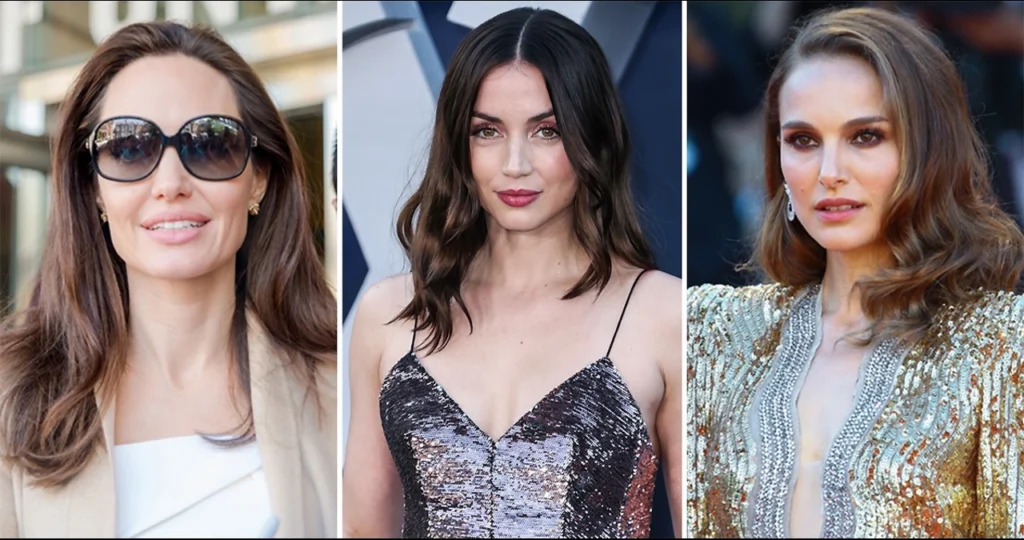Introduction to the rise of brunette actresses in the entertainment industry
The entertainment industry has seen a vibrant evolution over the decades, with actress representation shifting and changing like the tides. Blonde actresses ruled the silver screen for years, often epitomizing beauty standards and societal norms. Their image became synonymous with Hollywood glamour. However, as audiences grew more diverse and demands for inclusivity increased, brunette actresses began to carve their own space in film and television.
These talented women have broken barriers and challenged stereotypes through powerful performances that resonate deeply with viewers. From strong leads in blockbuster films to memorable roles on hit TV shows, they prove that hair color is just one aspect of an artist’s multifaceted identity. The rise of brunette actresses signifies much more than just a trend; it marks a shift toward embracing diversity and celebrating talent across all spectrums of appearance.
Let’s explore how these remarkable artists have made waves on-screen and in society at large—and why their contributions matter now more than ever.
The dominance of blonde actresses in early Hollywood and its impact on diversity
Its fixation on blonde actresses often defined early Hollywood. Icons like Marilyn Monroe and Jean Harlow dominated the silver screen, creating an archetype synonymous with beauty and desirability.
This focus on blondes shaped societal perceptions of attractiveness. Women were frequently typecast based on hair color, limiting opportunities for those who didn’t fit this mold. The narrative reinforced a narrow view of femininity.
As a result, diversity in film suffered greatly. Brunette actresses struggled to find roles that showcased their range. They were either relegated to supporting characters or overlooked altogether.
The impact extended beyond casting decisions; it influenced cultural standards, too. Audiences began equating success with conforming to these ideals, sidelining many talented performers who didn’t still need to meet them. This imbalance created a long-lasting ripple effect within the industry and society, echoing through generations as stereotypes persisted well into modern cinema.
Breaking stereotypes: How brunette actresses have challenged societal norms through their roles
Brunette actresses have long defied stereotypes, reshaping the narrative in film and television. Traditionally viewed as the “other” to blonde bombshells, they’ve taken on complex characters that challenge societal expectations.
These talented women portray roles that go beyond being love interests or sidekicks. They embody strong leaders, quirky geniuses, and fierce warriors. Their performances reveal depth and resilience, often overlooked by mainstream media.
Take Natalie Portman in “Black Swan.” She navigates mental health struggles while showcasing ambition and talent. Similarly, Emilia Clarke’s role in “Game of Thrones” transformed Daenerys Targaryen into an icon of empowerment.
Brunette actresses inspire audiences to rethink beauty standards by stepping into diverse shoes. They illuminate that strength comes in various forms—not just from a specific hair color but through character complexity and authenticity.
Representation matters: The importance of diverse representation in film and television.
Representation in film and television shapes society’s perceptions. When audiences see diverse characters, it broadens their understanding of different cultures and experiences.
Brunette actresses play a crucial role in this narrative. They bring depth to stories that often go untold. Their presence challenges the traditional beauty standards dominated by blonde icons, offering varied representations of femininity.
This diversity also inspires aspiring actors from all backgrounds. Seeing someone who looks like them succeed on screen motivates young talent to pursue their dreams.
Moreover, complex brunette characters often break stereotypes associated with hair color. These roles showcase strength, intelligence, and resilience—qualities that resonate with viewers everywhere.
Embracing diversity enriches storytelling. It allows filmmakers to explore multifaceted narratives that reflect real-world complexities while engaging broader audiences.
Top 5 brunette actresses who have made a significant impact in the industry
When it comes to impactful brunette actresses, several names shine brightly.
First up is Audrey Hepburn. Her timeless elegance and fierce independence in roles like Holly Golightly redefined femininity on screen.
Next, we have Angelina Jolie. With her powerful performances and humanitarian efforts, she’s become a symbol of strength for many aspiring artists.
Then there’s Natalie Portman. Known for her versatility, Portman’s roles range from dark dramas to lighthearted comedies, showcasing the depth brunette actresses can bring to any character.
Another standout is Mila Kunis. Grounded yet bold, she has carved out a unique niche in comedic and dramatic films with unmatched charm.
We can’tmust remember Salma Hayek. She shatters stereotypes while bringing passion to every role she takes on. Each of these talented women proves that brunette actresses leave an indelible mark on Hollywood’s landscape.
The future of brunette representation in the entertainment industry
The future of brunette representation in the entertainment industry looks promising. Audiences are increasingly seeking authentic stories that reflect real-life diversity. Brunette actresses are poised to play a pivotal role in this evolution.
As streaming platforms expand, there’smore room for varied narratives and characters exists. This shift allows brunette actresses to break free from traditional roles often associated with their hair color. From complex leads to powerful supporting characters, they can explore a range of personas.
Moreover, casting directors are recognizing talent over stereotypes. This change opens doors for fresh faces who are brunettes but bring unique qualities and experiences to their roles.
Social media amplifies voices advocating for diversity, and the momentum is undeniable. The industry is responding by embracing multifaceted representations that challenge old norms and celebrate individuality among all women, including those with brown locks.
Conclusion: Embracing diversity and celebrating the talent
The journey of brunette actresses in the entertainment industry reflects a broader narrative about diversity and representation. As they carve out their space on screen, these talented women challenge long-standing stereotypes. Their roles showcase strength, complexity, and authenticity that resonate with global audiences.
Seeing diverse characters empowers viewers from all backgrounds. Brunette actresses enrich stories and inspire future generations to embrace their individuality. This shift in casting opens doors for richer storytelling that includes various perspectives.
As we look ahead, we must continue advocating for inclusive representation across all aspects of film and television. Each performance spotlights talent that deserves recognition beyond hair color or any superficial trait.
Embracing this diversity is vital as it allows us to celebrate the myriad voices within our culture. The impact of brunette actresses reminds us how far we’ve come—and how much further there is to go in honoring every shade of talent on stage and screen alike.

